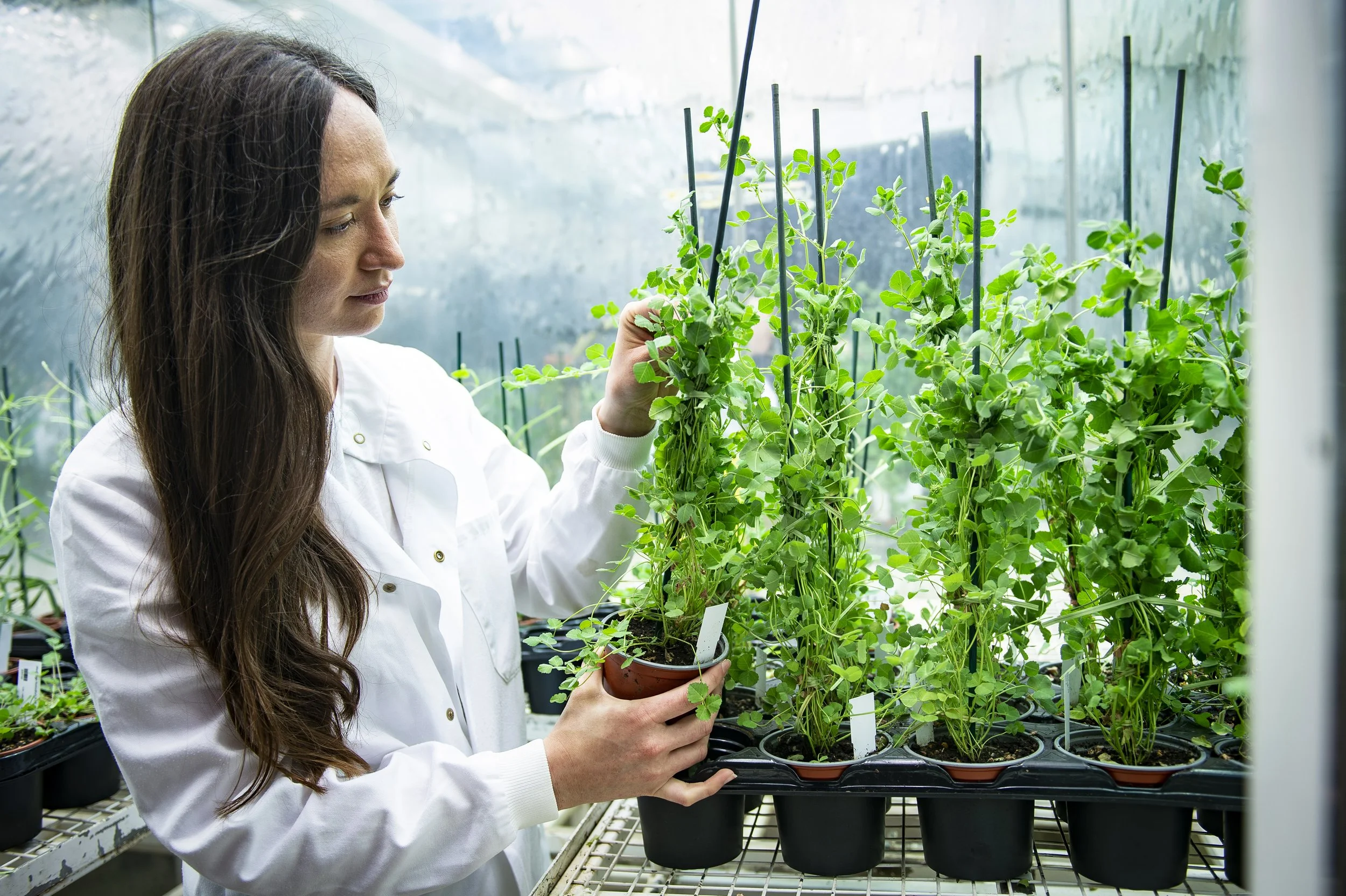
Gene Discovery
We use BladeSeek™, our proprietary gene discovery platform, to unlock cures for crop diseases that threaten global food security.
At a Glance
Crop(s): Any crop, regardless of reference genome
Significant Disease: A broad range
Region(s) Affected: Global
Loss/Costs: Crop diseases/pests account for up to 40% of total global yield loss with economic losses approaching $300 billion/yr
James Houghton prepares samples for gene discovery, Norwich, UK
Photo of wheat stripe rust taken from the field
The Challenge
Safeguarding the world’s food supply is the challenge of our lifetime. Crop disease and pests are among the most significant threats to our food supply, accounting for up to an estimated 40% of all global yield loss among major crops. This has existential consequences, ranging from severe undernourishment, political instability, and economic losses by some estimates of up to $300 billion every year.
Solutions must target commercial agriculture, which produces at large scale, and smallholder farmers in low- and middle-income countries, who play a crucial role in crop production and feeding large populations but often lack access to the latest innovations.
The Strategy
The BladeSeek™ platform consists of multiple, unique, high-throughput gene discovery tools that harness the full potential of plant diversity to defeat any disease in any crop.
We are applying the proprietary gene discovery tools that make up our BladeSeek™ Platform to build an unprecedented toolkit comprised of a massive anthology of genes, phenotypic data, and powerful AI tools to rapidly identify and validate disease resistance genes for wheat, corn, soybean, potatoes, and other important crops.
Our team’s experience and insights in plant science, translational research, and bioinformatics have enabled us to pioneer an efficient approach that reduces the time and cost, while vastly increasing the throughput, for discovery of the most promising sentries to activate a plant’s natural defenses.
The effort has resulted in the identification, screening, and validation of 1000’s of genes, both among the main classes of immune receptors in plants and novel modes of action, to help produce long-lasting resistance.
In contrast to traditional gene discovery or one disease approach, our platform can be applied to any plant, including the 99.9% of land plants that lack reference genomes. Using AI, we are working to scale our approach with greater speed, breadth, and success rate than any existing method.
*We have successfully identified and validated genes against the following pathogens:
Stem rust (Puccinia graminis f. sp. tritici)
Stripe rust (Puccinia striiformis f. sp. tritici)
Leaf rust (Puccinia triticina)
Wheat blast (Magnaporthe oryzae pathotype Triticum (MoT))
Fusarium head blight (Fusarium graminearum)
Soybean Rust (Phakopsora pachyrhizi)
Ear and Stalk Rot (Stenocarpella maydis)
Helen Brabham examining rust-resistant wheat, Norwich, UK
The Science
Plants have cell-surface and intracellular sensors that keep a watch for invasion by a host of plant diseases and pests. When they detect an intruder, these receptors activate the natural defenses of plants. Yet plants have only a subset of these receptors and may be missing the ability to detect a critical intruder.
Our BladeSeek™ platform is capable of finding more of the two main classes of receptors, as well as novel modes of action proteins. As one example, Nucleotide-binding Leucine-rich Repeat (NLR) proteins are plant receptors that recognize pathogen “effector” proteins and trigger a strong immune response. NLRs are highly specific, so finding the right NLR that recognizes the variation of effectors within and between pathogen species is a major challenge.
Pattern Recognition Receptor (PRR) proteins are another main class of receptors that provide broad recognition to plant diseases and pests. Plants with multiple NLR and PRR receptors and other modes of action can have strong, long-lasting resistance to disease – protecting crops and reducing the need for crop chemicals.
Many plants succumb to disease as they do not have the right receptors for major pathogens. Since the earliest days of agriculture, farmers have found they can select resistant plants. Through plant science, we have come to understand that in this way receptors were bred into crops, and today, with modern breeding tools, individual specific receptors can be precisely selected and introduced into plants. Still, conventional approaches for identifying functional these genes are labor-intensive and expensive.





